Jan’s Flies
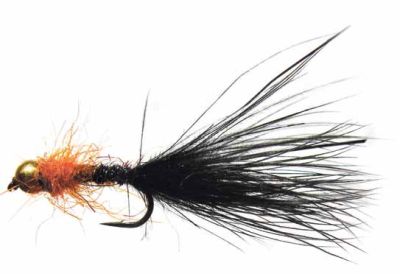 Presented from Issue 108, February 2014
Presented from Issue 108, February 2014
As I write this we are experiencing some very hot weather in the Central Highlands. Prior to this though over Christmas it was cold and extremely windy. On most lakes as it gets hot the fish retreat to cooler waters. I don’t like to go boating on the very rough days, but am happy to give the shore fishing a go.
Just recently Bill and I were fishing the Bronte system and we started with a team of English dries - no fish, then small English wets - no fish. It was hot, so the thinking cap went on and I put a #3 sinking line on and some weighted flies. Bingo, we were into the fish and took a number of nice specimens – mostly on the bead head ‘Streamline Bugger’ point fly.
- Written by Stephen Smith - Rubicon Web and Technology Training
- Parent Category: Articles
- Category: Jan’s Flies
- Hits: 4177
 Presented from Issue 108, February 2014
Presented from Issue 108, February 2014
As I write this we are experiencing some very hot weather in the Central Highlands. Prior to this though over Christmas it was cold and extremely windy. On most lakes as it gets hot the fish retreat to cooler waters. I don’t like to go boating on the very rough days, but am happy to give the shore fishing a go.
Just recently Bill and I were fishing the Bronte system and we started with a team of English dries - no fish, then small English wets - no fish. It was hot, so the thinking cap went on and I put a #3 sinking line on and some weighted flies. Bingo, we were into the fish and took a number of nice specimens – mostly on the bead head ‘Streamline Bugger’ point fly.
- Written by Stephen Smith - Rubicon Web and Technology Training
- Parent Category: Articles
- Category: Jan’s Flies
- Hits: 3578
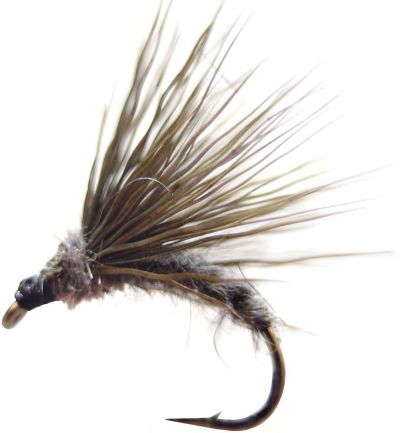 Presented from Issue 107, December 2013
Presented from Issue 107, December 2013
I would like to tell you my thoughts on Arthurs Lake. Many are critical of the numerous small fish, the results of good spawning over the last few years. It does show it is a very healthy system.
If there were few fish there would be complaints as well. And it seems not so long ago anglers were complaining of low levels and no water. As I write this Arthurs is 40mm from full. It has never been that high, and has never spilled.
- Written by Stephen Smith - Rubicon Web and Technology Training
- Parent Category: Articles
- Category: Jan’s Flies
- Hits: 5113
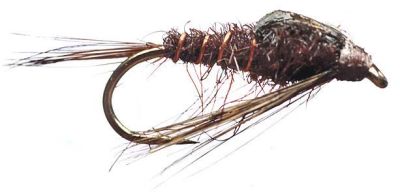 Presented from Issue 106, October 2013
Presented from Issue 106, October 2013
It is time to think nymphs. Numerous trout foods have a nymphal stage as part of their life cycle and these include damselflies, dragonflies, mayflies, stoneflies, caddis and midges. All have different body shapes and colours.
There is no pattern to cover the lot, but I think it is important to get the size and colour correct. The weight depends on what depth the fish are at and as the season progresses the nymphs become larger and more active. Earlier in the season the fish are deeper and as the water warms fish and insects rise in the water column.
- Written by Stephen Smith - Rubicon Web and Technology Training
- Parent Category: Articles
- Category: Jan’s Flies
- Hits: 6591
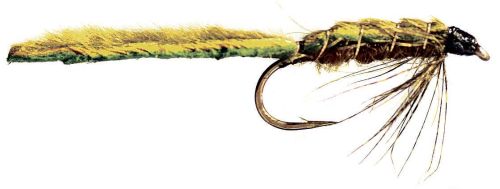 Presented from Issue 105, August 2013
Presented from Issue 105, August 2013
Fishing early season is cold, but it can be very productive.
If you are fly fishing you will almost certainly be wet fly fishing - unless the fish are in very shallow water then a dry fly may work.
- Written by Stephen Smith - Rubicon Web and Technology Training
- Parent Category: Articles
- Category: Jan’s Flies
- Hits: 5352
Presented from Issue 104, June 2013
Never before has there been so many fly tying products to choose from. A recent book I read had a number of very early flies and mentioned many different animal hairs and down from a variety of birds.
Today there are so many different artificial materials produced the fly tier has never had it so good, nor so confusing.
Those early materials were often simple and we still use a lot today. There weren’t many really bright natural colours, but one was peacock herl, and that is one of my most used materials even today.
- Written by Stephen Smith - Rubicon Web and Technology Training
- Parent Category: Articles
- Category: Jan’s Flies
- Hits: 4178
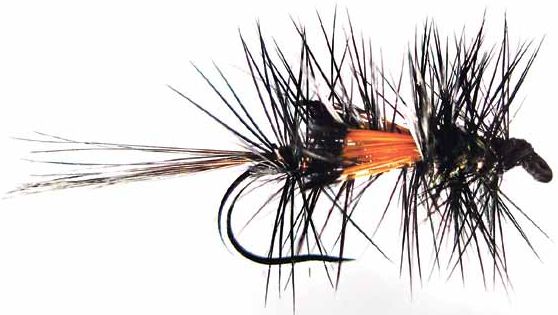 Presented from Issue 103, April 2013
Presented from Issue 103, April 2013
Recently I fished with a friend on Arthurs Lake. It is always interesting fishing with other people — not only to have some different company, but to learn some new techniques. I fish a nine foot, six weight for dries and if there are no fish moving off come the dries and I change to semi-wets or full wets with a sinking line. A DI3 is my favourite on a ten foot, six weight rod. I like the longer rod when lifting the flies to the surface on the retrieve — especially if using 2-3 flies and a long leader. Back to fishing with my friend though - who happens to be a dry fly purist for some reason. It was pleasant looking for fish, but there was not much moving so we were prospecting as much as anything.
- Written by Stephen Smith - Rubicon Web and Technology Training
- Parent Category: Articles
- Category: Jan’s Flies
- Hits: 3761
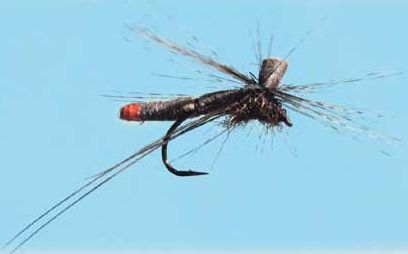 Presented from Issue 102, February 2013
Presented from Issue 102, February 2013
Around the state at the moment there is a multitude of insects of every size and description from tiny midge to large grasshoppers. On a recent trip to my favourite remote western lake I noticed the abundance of craneflies. Walking in scrubby areas and brushing past the bushes would put out dozens of these insects. Most days in this area there is wind and even though craneflies are quite large they are delicate. It does not take much wind to push them onto the water and trout certainly have them on the menu.
- Written by Stephen Smith - Rubicon Web and Technology Training
- Parent Category: Articles
- Category: Jan’s Flies
- Hits: 4026
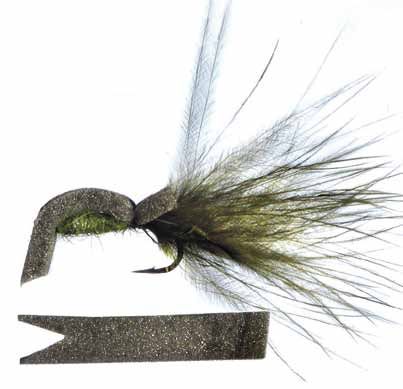 Presented from Issue 101
Presented from Issue 101
Over the last couple of months I have traveled to some of Australia’s most remote red sand country where there were fish in remote billabongs.
These are fed by the northern waters flowing into Lake Eyre Basin. To be invited onto a million acre station catching golden perch (yellow belly) and grunter was a great privilege and is another fishing adventure ticked off.
- Written by Stephen Smith - Rubicon Web and Technology Training
- Parent Category: Articles
- Category: Jan’s Flies
- Hits: 4144
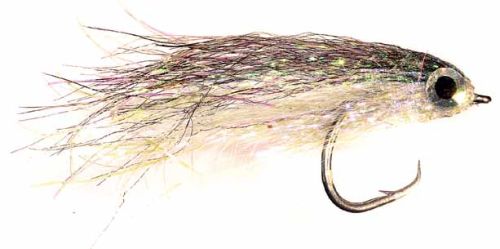 Jan's Flies Issue 99
Jan's Flies Issue 99
Presented from Issue 99
I suppose everybody is geared up for the new trout season. My start was during July by thoroughly cleaning up my fly tying studio. It is so nice to have everything so one can find things. It will be some time before the fish are seriously looking up so wets will be the go for me.
Exciter flies or lure flies will be my choice for action. May I suggest the use of two flies in a larger point fly with something smaller as a dropper. The point fly really needs to be at least four feet from the dropper.
Point patterns could include Yetis, Woolly Buggers, Matukas, Tom Jones, Wigram’s Robin and fur flies in various colours. For droppers, something quite small. This may be English wets, spider patterns are good tied with a really good moving hackle, nymph patterns dressed lightly as you must remember it is really early in the season and there is not much growth in any insects for the next couple of months.
- Written by Stephen Smith - Rubicon Web and Technology Training
- Parent Category: Articles
- Category: Jan’s Flies
- Hits: 3728
Presented from Issue 98
Over early winter I spent some time on Tasmania’s beautiful east coast. With all that water beckoning me of course one would have to go fishing. Flathead would be the target but then I guess anything that may swim past get something thrown at them. Certainly there was a lot of salmon around, but the majority of schools I saw were too far away to cast to.
- Written by Stephen Smith - Rubicon Web and Technology Training
- Parent Category: Articles
- Category: Jan’s Flies
- Hits: 3600
Current TFBN
Click above for current issue content. The current issue of TFBN is extensive and topical. In Tackle Stores, Newsagents and by subscription.
Delivered to your door for $48 for 2 years (8 issues). To subscribe, send Mike $48 via www.paypal.com.au . (Basic instructions are here) The email is at Contact Us. Your address will be included from PayPal.
Or phone Mike with your c/c handy on 0418129949
Please ensure your details are correct, for Mike to organise delivery.
TFBN Newsletter Sign up Form
Why not submit an article ?
When you have finished for the day, why not have a brag about the ones that didn't get away! Send Mike an article on your fishing (Click here for contact details), and we'll get it published here. Have fun fishing - tasfish.com
Category Descriptions
Here is a list of all of the Article Categories. The number in Brackets, eg (13) is the number of articles. Click on Derwent River and all articles relating to the Derwent will be displayed in the central area.
Articles by Category
-
Rivers (3)
-
Saltwater and Estuary Fishing (149)
-
Kayak Fishing (34)
-
Lakes (1)
-
Great Lake (62)
-
Lake Leake (52)
-
Woods Lake (16)
-
Lake Augusta (11)
-
Huntsman Lake (13)
-
Lake Pedder and Gordon (10)
-
Lake Dulverton (5)
-
Lake Crescent (6)
-
Tooms Lake (10)
-
Lake Mackintosh (2)
-
Lake Barrington (5)
-
Little Lake (8)
-
Meadowbank Lake (5)
-
Lake King William (7)
-
Lake St Clair (2)
-
Western Lakes (12)
-
Arthurs Lake (35)
-
Lake Echo (7)
-
Four Springs (54)
-
Lake Sorell (7)
-
Lake Burbury (6)
-
Other Lakes (57)
-
Brushy Lagoon (18)
-
Little Pine Lagoon (5)
-
Penstock Lagoon (16)
-
Brumbys Creek (7)
-
-
Events (48)
-
Estuary Fishing (0)
-
Coastal Catches (46)
-
Super Trawler (46)
-
IFS, DPIPWE, MAST and Peak Bodies (435)
-
Commercial Interests (98)
-
Other (24)
-
TFBN Back Issues (8)
-
Fly Fishing (67)
-
Trout Fishing (250)
-
Meteorology and Weather (8)
-
Jan’s Flies (50)
-
Tuna Fishing and other Game Fishing (86)
-
Cooking Fish (19)
-
Fishing Information (1)
-
Fishing Books (8)
-
Videos (5)
-
Tackle, Boats and other Equipment (146)
-
World Fly Fishing Championship 2019 (2)
Popular Tags
windyty.com
Visit https://www.windyty.com/
Rubicon Web and Technology Training
Hello everyone, I thought it would be a good time to introduce myself.
My name is Stephen Smith and I have been managing the website tasfish.com since May 2009.
It has been an epic journey of learning and discovery and I am indebted to Mike Stevens for his help, support and patience.
I am developing a new venture Rubicon Web and Technology Training ( www.rwtt.com.au ). The focus is two part, to develop websites for individuals and small business and to train people to effectively use technology in their everyday lives.
Please contact me via www.rwtt.com.au/contact-me/ for further information - Stephen Smith.
From the Archives ... (last chance)
Sea Trout Fishing - October and November
Sea Trout Fishing - October and November
Christopher Bassano
Fishing guide Christopher Bassano explores his favourite fishing-and shares a few tips that will help you discover the world of trout near the sea.



